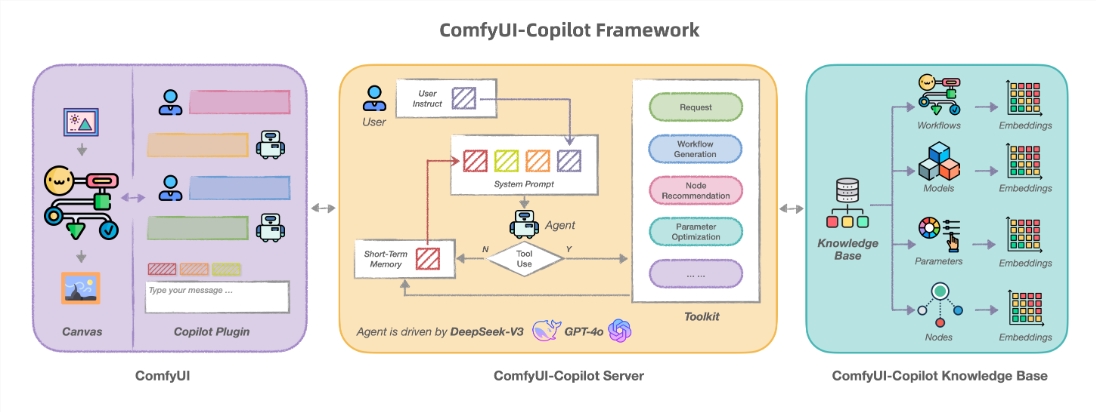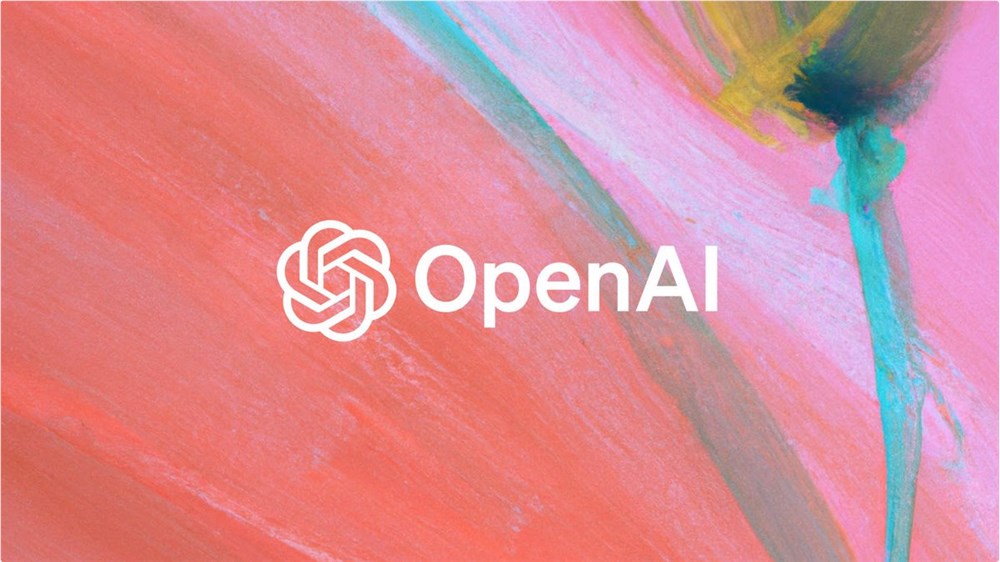Recently, an innovative tool called ComfyUI-Copilot has garnered significant attention in the AI-generated content field. This tool combines natural language processing with ComfyUI's node-based workflow, empowering users with image generation and editing capabilities akin to GPT-4. Its emergence not only significantly lowers the barrier to entry but also provides both novice and professional users with an efficient and intelligent creative platform, marking a crucial step towards more user-friendly and automated AI image generation technology.
Natural Language Driven, Simplifying Complex Processes
The core highlight of ComfyUI-Copilot is its natural language interaction capability. Traditionally, using node-based workflow tools like ComfyUI requires a certain technical foundation, enabling users to manually build models, connect nodes, and adjust parameters. Now, users only need to describe their needs using simple text, and Copilot can automatically complete the entire process from model selection to workflow construction. This "chat-like" operation makes complex AI processes accessible, allowing even beginners with no understanding of the underlying logic to easily get started.

For example, if a user wants to generate an image of a "dreamy girl in a forest," they only need to input a description like "Generate an image of a girl in a forest using the SDXL style, with a LoRA model, and add a misty atmosphere." ComfyUI-Copilot will quickly respond. It will automatically select the SDXL model, insert the appropriate LoRA node, connect the text encoder, sampler, and output nodes, and optimize the prompt, ultimately generating a complete image generation workflow. Users can obtain high-quality output with almost no manual intervention, a remarkable convenience.
Multifunctional Smart Assistant, Significantly Enhancing Efficiency
ComfyUI-Copilot is more than just an automated construction tool; it's a versatile smart assistant integrating multiple practical functions. Whether recommending suitable models and nodes for a task or providing detailed explanations of each node's function, it provides users with real-time support. More importantly, when the workflow encounters problems, Copilot can diagnose errors and suggest fixes, helping users quickly resolve issues. This diagnostic capability is crucial for debugging complex generation tasks, significantly reducing trial-and-error costs.

Furthermore, the tool supports both Chinese and English interaction and can recommend download links for relevant resources based on user needs. For example, if a required node is not yet installed, Copilot will indicate the missing component and guide the user to obtain it. This thoughtful design further enhances the user experience, making it a true "one-stop" solution.

The Perfect Fusion of ChatGPT and Stable Diffusion
From a technical perspective, ComfyUI-Copilot can be viewed as a combination of ChatGPT, Stable Diffusion (SD), and a node graph system. It uses natural language processing technology to understand user intent, combines Stable Diffusion's powerful generation capabilities, and achieves precise control through ComfyUI's modular node system. This three-in-one design not only retains ComfyUI's flexibility in image generation but also grants it broader applicability through automation and intelligence.
Industry experts point out that the launch of ComfyUI-Copilot is a revolutionary innovation for traditional AI image generation tools. It integrates previously scattered functions into a smooth workflow, allowing users to focus on creativity itself rather than technical details. For designers, artists, and content creators, this is undoubtedly a productivity booster.
Application Prospects and Community Feedback
The potential applications of ComfyUI-Copilot are extremely wide-ranging. From generating artistic illustrations to producing video content and rapid prototyping, it can handle it all. It's particularly beneficial for teams or individuals who need to iterate on ideas quickly, as it significantly shortens the time from concept to finished product. For example, after generating an image with a specific style, users can further edit the image through natural language instructions, such as adjusting lighting or adding elements, the entire process is like having a conversation with AI.
On social media and developer communities, ComfyUI-Copilot has received enthusiastic feedback. Many users praise its user-friendliness for beginners, believing it lowers the learning curve while also providing more efficient workflows for experienced users. Some developers have stated that the tool's node recommendations and error correction features are particularly useful, even calling it the "personal tutor in the AI image generation field."
With the continuous evolution of AI technology, the future development of ComfyUI-Copilot is worth anticipating. Currently, it has demonstrated powerful potential, but there is still room for improvement, such as supporting the integration of more models and optimizing the processing speed of complex tasks. The development team revealed that they are planning to further expand its functionality, including full automation of video generation and more intelligent prompt optimization algorithms.
In summary, the release of ComfyUI-Copilot has not only injected new vitality into the ComfyUI ecosystem but has also paved the way for the popularization of AI-generated content. Using natural language as a bridge, it connects user creativity with technical implementation, allowing everyone to become a creator of AI art. It's foreseeable that this tool will play an increasingly important role in the future field of digital creation.
Project Address: https://github.com/AIDC-AI/ComfyUI-Copilot










